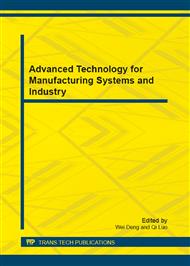p.169
p.175
p.180
p.186
p.192
p.197
p.203
p.209
p.213
Parameters Evaluation for Aero-Engine Prognostic Health Management
Abstract:
Prognostic health-management of aero-engine’s fleet have features with multi-source and asynchronous. Cruise engine gas temperature (EGT) and Take-off EGT have always been the focus of evaluating gas performance and predicting the remaining life. The calculation method of EGT Margin was showed based on the introduction of the definition and classification of the EGT. It analyses not only the relationships between Cruise EGT and Take-off EGT but also each other’s main functions. Meanwhile, an instance was used to explain the disadvantages of using Cruise EGT to calculate life prognostics.
Info:
Periodical:
Pages:
192-196
Citation:
Online since:
November 2012
Authors:
Price:
Сopyright:
© 2012 Trans Tech Publications Ltd. All Rights Reserved
Share:
Citation:


